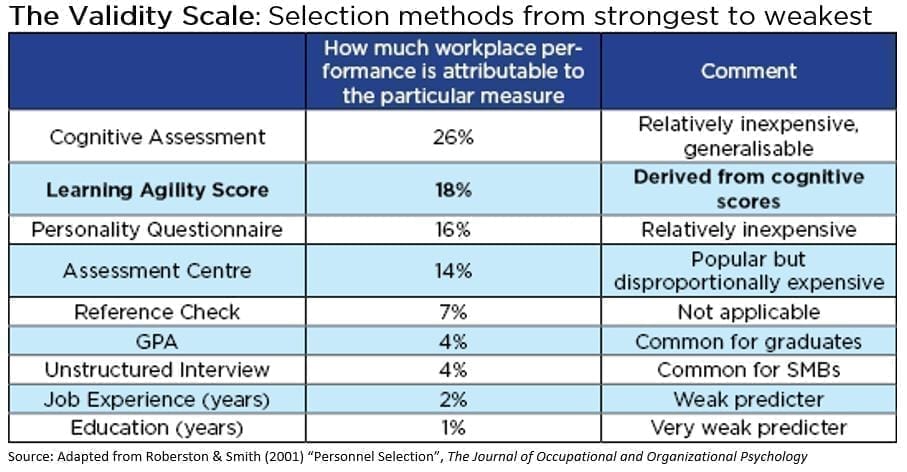With little or no work experience to draw from, how can you get a clear picture of how well graduates will perform in your company? Surely, the conventional method of looking for previous markers of success is the best way to go about it, right?
Well, not according to Laszlo Bock, former SVP for People Operations at Google. He says in his book: “Work Rules!: Insights from Inside Google That Will Transform How You Live and Lead” indicators such as GPA are essentially worthless as predictors of job performance. His reason being the work environment is nothing like the academic environment.
So, is he right or is he wrong?
Well, the answer is: partly. The truth of it is that no prediction technique can foresee the different ways a person may act or the different variables that decide whether a person performs well or not at a given job. HR professionals have always been taking risks, and risk couldn’t be any more complex when it comes to people. On the bright side, virtually all techniques are useful to a certain degree (some a lot more so than others).
What is learning agility?
Learning agility is the ability and willingness to learn from experiences and apply to new conditions. Those who have exceptional learning agility are motivated to learn new information and skills, enjoy self-directed learning and are able to understand and solve complex problems. To succeed in today’s complex business world, leaders must be adaptable, resilient and open to innovative thinking. And above all, according to our research… they need one essential quality: Learning Agility. In today’s dynamic business environment, leaders can no longer rely on strategies that have worked in the past, or even those that are working today. The best performing enterprises have leaders who thrive on change and can make sense of uncertainty. These individuals have learning agility.
How does learning agility stack up?

Learning agility has a strong correlation with workplace performance, slotting in just below the general cognitive ability. Using the table above, we can see learning agility accounts for about 18% of the variation in job performance between employees. Put simply, let’s say the chances of making a good hire by choosing randomly from a pool of applicants is 50% – an either-or scenario. If you instead base your decision on learning agility alone, your chances of hiring a good performer go up from one in two by about 18%, to 59%. That’s an extra nine good ones out of every 100 hires.
Moving the odds in our favour
So, an extra nine is better, but not great right? Well, considering the best indicator of general mental ability (GMA) only raises our chances by about a quarter, to 63%, we’re not doing too bad. However, currently we are only looking at a single predictor in a vacuum. The key, familiar to anyone making an educated bet, is to look at many factors in unison to form a holistic picture. There is no magic bullet here, but the use of all available information will result in the highest chance of making a good hire.
If you put your focus on learning agility, along with a host of other factors you’ll get a lot more good hires. Those bad hire costs will go down significantly, while the benefits from employees with exceptional learning agility are boundless.